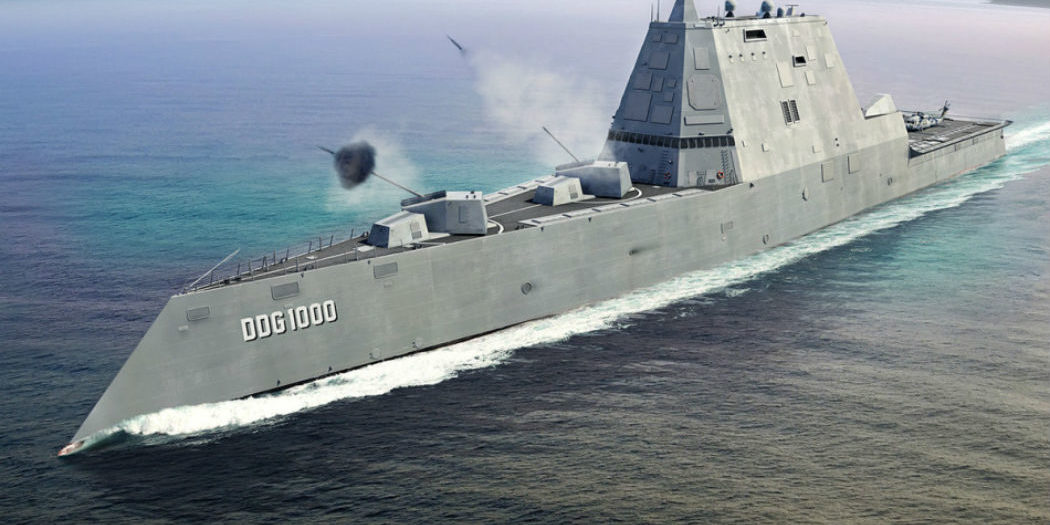Quick Facts
| Role and Mobility | Target Illumination, Volume Surveillance, Detection, and Tracking; Ship-Mobile |
| Frequency | X-Band/S-Band |
| Range | Unknown |
| Air Defense Interceptor Systems | Aegis Afloat |
| Targets | High and Low Altitude Anti-Ship Cruise Missiles, Aircraft, and Incoming Shore-Based Artillery |
| Status/Exports | Operational; None |
| Producer | Raytheon |
Overview
Raytheon’s Dual Band Radar (DBR) is employed by the United States Navy and operates within both the S-band and X-band frequencies — the first United States radar to have this ability.[i] It does this by combining the capabilities of the X-band AN/SPY-3 Multifunction Radar and the S-band Volume Surveillance Radar (VSR).[ii] The DBR also boasts a fault detection/fault isolation system to automatically determine the need for maintenance. The six-faced DBR was also designed to minimize the amount of corrective and preventative maintenance needed by allowing access to all antenna components.[iii]
Strategic Implications
The DBR is strategically valuable because the presence of two overlapping radars allows the operator to minimize the effects clutter by being able to switch between them as conditions warrant.[iv] The DBR also has linking capabilities with the SM-2 and Evolved SeaSparrow Missile (ESSM) providing a complete detection to intercept capability.[v] DBR can even operate 24 hours a day, seven days a week during extended missions with an operational availability of greater than 95 percent.[vi] The AN/SPY-3 radar’s superior coverage and effective discrimination combines with the VSR’s all-weather search capabilities, providing an unprecedented level of performance and capability to detect and track hostile targets.[vii]
Timeline
August 2016: Raytheon Awarded Navy Contract for Future Carrier, Big Deck AESA Radar[viii]
March 2015: Navy reveals that DBR will only be fitted on first Gerald R. Ford aircraft carrier
September 2013: Raytheon was awarded a $7.2 million contract modification for hardware changes to the DBR[ix]
May 2010: Dual Band Radar successfully tracked targets with a multiband radar and common controller for the first time[x]
October 2006: Raytheon successfully integrates final element of Dual Band Radar[xi]
Recent News
References
[i] https://www.raytheon.com/capabilities/products/dbr
[ii] Ibid.
[iii] https://www.raytheon.com/capabilities/products/dbr
[iv] https://navy-matters.blogspot.com/2017/05/dual-band-radar-review.html
[v] https://www.raytheon.com/capabilities/products/dbr
[vi] Ibid
[vii] https://www.dvidshub.net/news/194234/dual-band-radar-look-into-navys-newest-technology
[viii] https://news.usni.org/2016/08/22/raytheon-awarded-92m-navy-contract-future-carrier-big-deck-aesa-radars
[ix] https://www.defenseindustrydaily.com/the-us-navy-dual-band-radars-05393/
[x] http://raytheon.mediaroom.com/index.php?item=1549
[xi] http://www.defense-aerospace.com/articles-view/release/3/74780/raytheon-integrates-dual-band-radar-for-ddg-1000-destroyer.html

